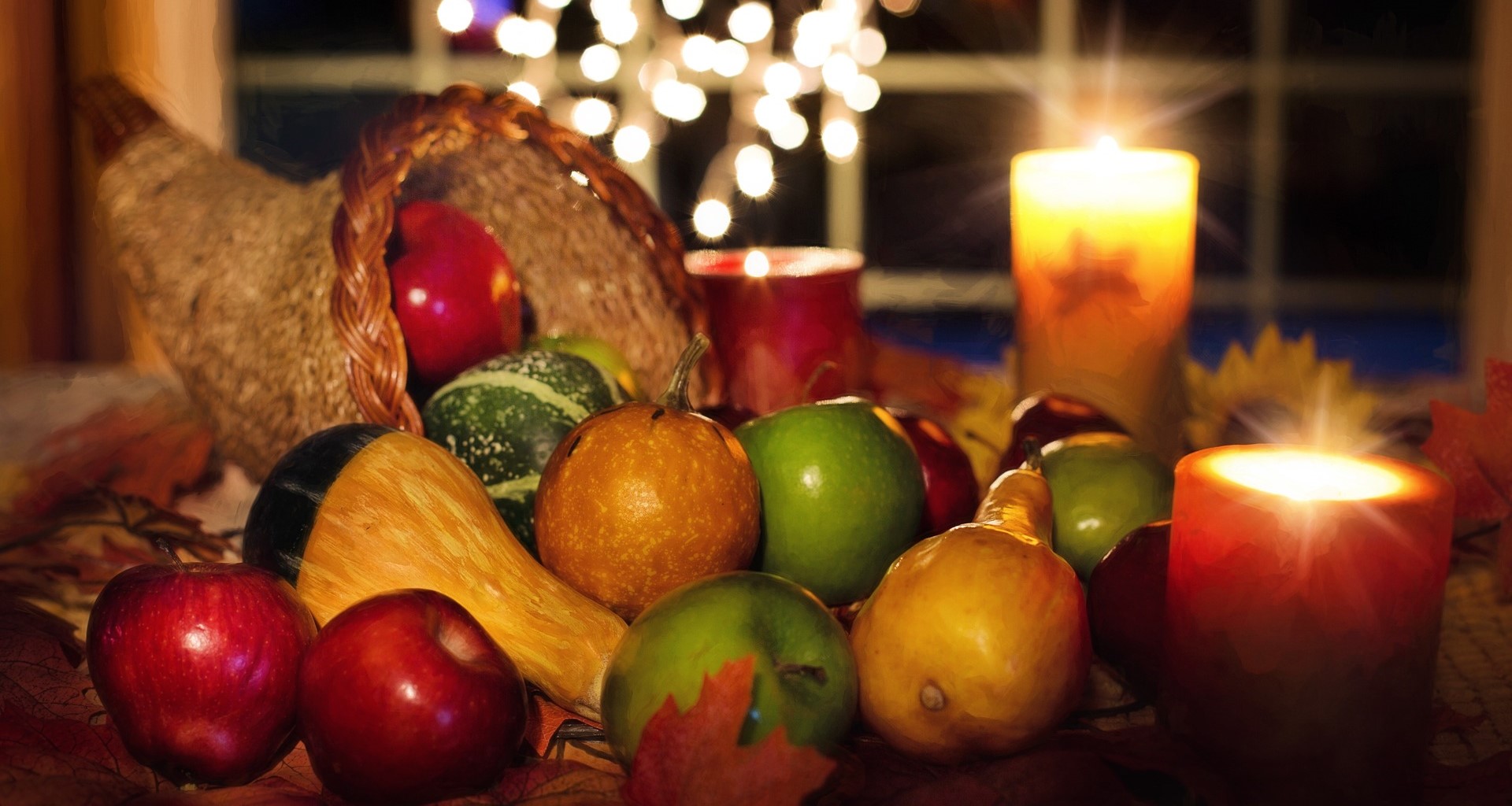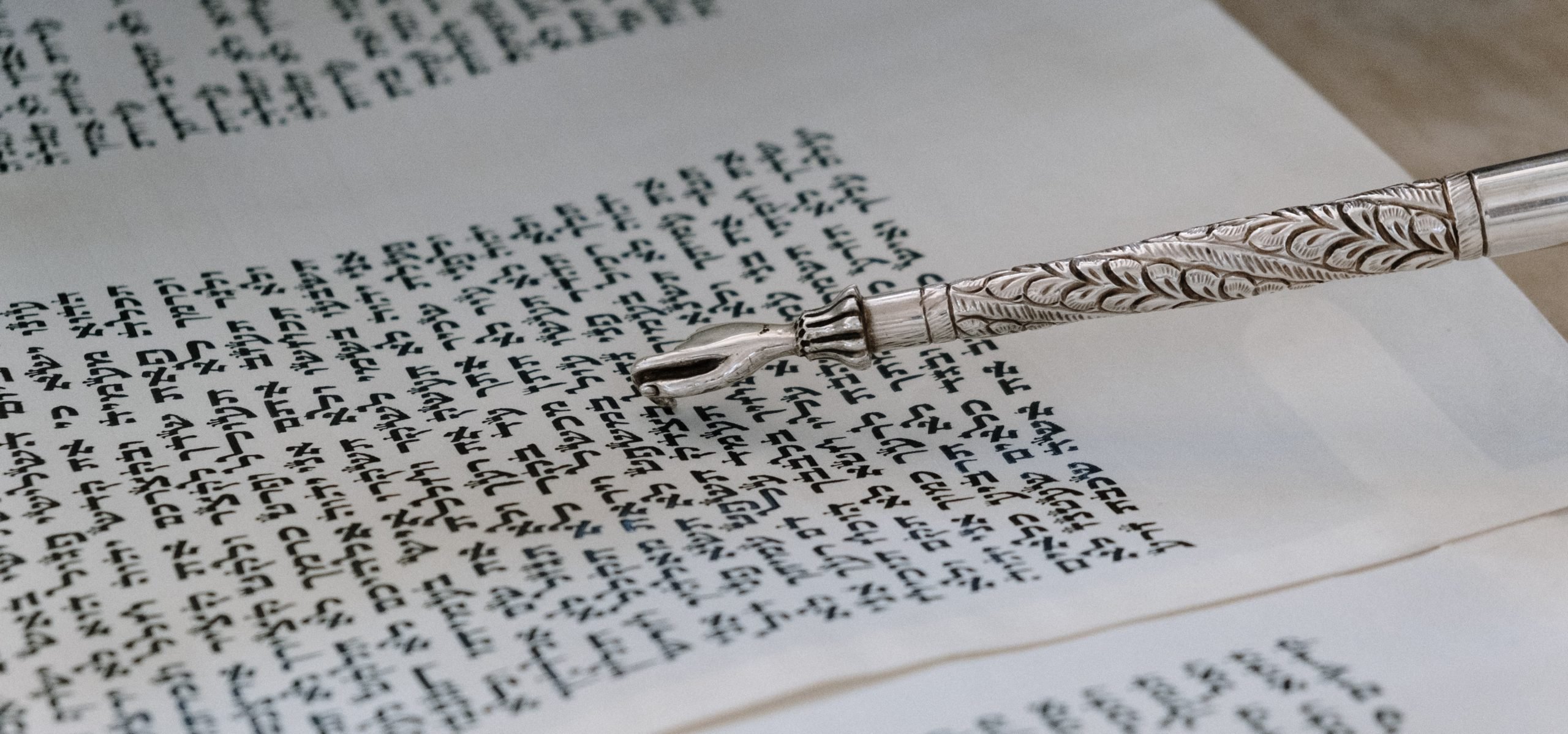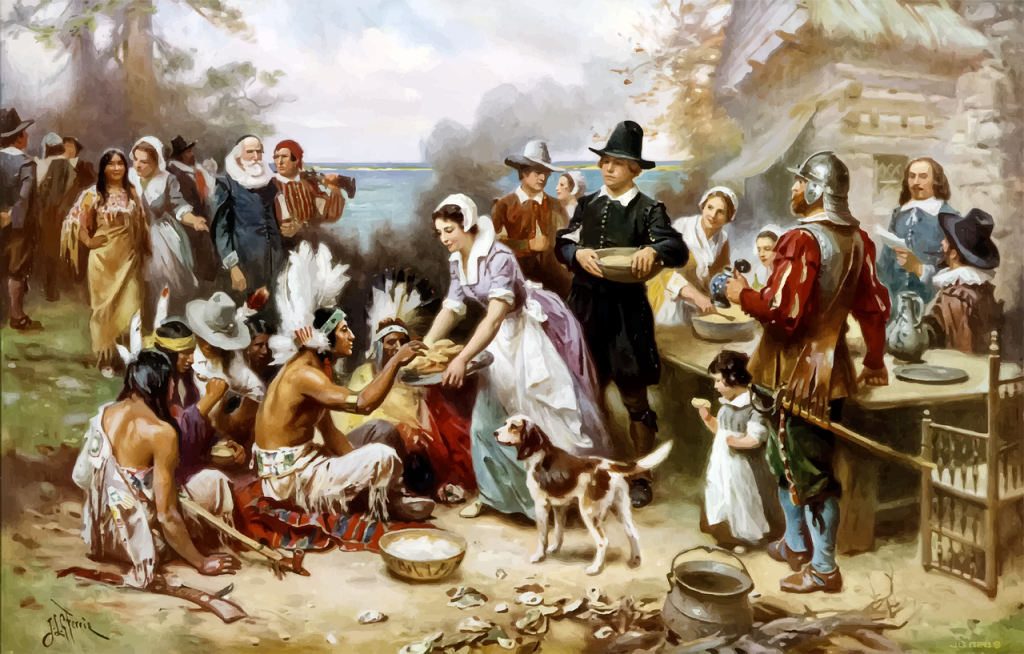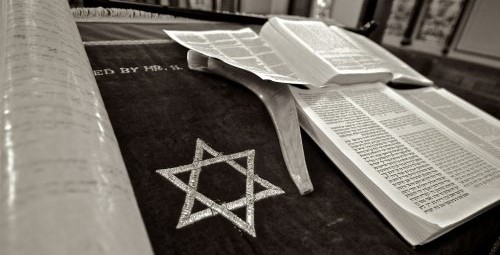
As Americans of all faiths get ready to celebrate Thanksgiving Day, read on to find out all about the holiday’s surprising Jewish connections, as well as American Jews’ historic relationship with its observance.

The very first Thanksgiving, held in the summer of 1623, was organized after what Jewish tradition would call a year of tsuris – terrible trouble. Dozens of pilgrim settlers had perished from starvation, disease, and violence throughout a bitterly cold winter, a spring drought, and continued attacks from a neighboring Indigenous tribe. Their troubles were eased by the arrival of a ship from England with much-needed supplies – and so, they praised God, gave thanks, and threw a celebratory meal, even inviting the tribe that had previously attacked them to break bread.

Historians believe that this urge to give thanks with a celebration after surviving hardship was inspired by the Hebrew Bible and Jewish tradition, which the religious Puritans held in great esteem. In fact, it is believed that this celebratory meal was opened by reciting the Hebrew blessing Birkat HaGomel, from Psalm 107, which till this day is a prayer often said by those who had been spared mortal danger.
When Abraham Lincoln formally codified Thanksgiving Day as a federal holiday in 1863, he based both the holiday’s themes and its fall timing on the Biblical festival of Sukkot, which gives thanks to God for the fruits of the harvest.
While the holiday was established by religious Christians, they were looking to our Hebrew Bible for their basis and inspiration!

Jewish communities in the United States have been celebrating Thanksgiving Day since George Washington first called on Americans to observe it in 1789. Jews saw themselves as American patriots, many having supported and even fought in the American Revolution, and had their freedom of worship guaranteed early on by Washington himself. They therefore saw it fit to join other faith communities in this new American holiday and to celebrate and give thanks for their freedom and bounty in the newly established United States.
New York’s Congregation Shearith Israel, founded in 1654, not only enthusiastically embraced the opportunity to give thanks as American Jews as soon as the holiday was established, but even created a special prayer service for Thanksgiving Day, a tradition the synagogue still continues today.

As more Jews came to the United States in the 19th and 20th centuries, many of them embraced this non-denominational holiday as well. It was an opportunity to join American culture without interfering with Jewish traditions or values; it is, in fact, in some ways a very Jewish holiday! Its central ritual is a multi-course meal with the entire family (just like shabbat and many Jewish holidays!), and it’s infused with themes of giving thanks to God for one’s good fortune and freedom (which Jews already do with our grace after meals prayers).
Many rabbis have in fact encouraged American Jews to join in Thanksgiving Day to give thanks for their unprecedented level of religious freedom in the United States. Even some of the most prominent Orthodox rabbinical figures of the 20th century, like Rabbi Joseph Soloveitchik and Rabbi Moshe Feinstein, issued formal rulings in favor of Thanksgiving.
Thanksgiving Day has been a way for U.S. Jews to claim their place within American culture and the American array of different faith communities. And of course, Hanukkah – the holiday celebrating our right to worship as Jews – will take place within mere weeks of Thanksgiving, so now's a great time to reflect on the related themes of the two holidays and give thanks for our freedoms!
Add Blessings and Thanksgiving to your home year-round with Biblical home decor!
And shop our Black Friday Sale for unbeatable deals on the top Jewish gifts from Israel!
Subscribe to JudaicaWebStore mailing list to receive updates on new arrivals, discounts and special offers
IL GLOBAL INC
3 Germay Dr Ste 5 PMB
23545 Wilmington, DE 19804,
USA





Owned by IL GLOBAL INC maintains its offices and warehouse in Jerusalem, Israel.© 1999-2024 Buy unique Israeli Judaica, for sale exclusively online
Owned by JWG Ltd, maintains its offices and warehouse in Jerusalem, Israel. © 1999-2022 JWG Judaica and Dead Sea Cosmetics

